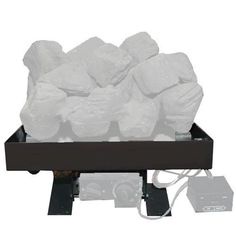Innovative Solutions For Low Nitrogen Burners
Whether you are in the market for new low nitrogen burners for a boiler or are looking to replace the ones you already have, you want to make sure that you find the right solution for your needs. The good news is that there are some innovative solutions out there that you can choose from that will help you lower your NOx emissions. These include the use of Biogas, bio-oil, process by-products, and hydrogen combustion.

Source:https://i.pinimg.com
High NOx emissions in boilers
Using innovative solutions for high NOx emissions in boilers can reduce the amount of harmful pollutants released into the environment. For example, an extended surface finned tube economizer can reduce the boiler's operating costs and allow the facility to run at a lower steam load.
Some innovative solutions for high NOx emissions in boilers include stage combustion, which promotes air reactions in multiple stages. Other measures include water or steam injection and burner modifications. A qualified expert can help you choose the most effective NOx reduction technique for your application.
For example, in conjunction with other NOx control methods, injecting water or steam into the boiler can reduce NOx emissions by up to 50%. This technique can be used on natural gas and distillate oil-fired boilers.
Another method of reducing NOx emissions is by using an excess air supply. A typical burner has a supply of between 10 and 20%. By decreasing this supply, you can reduce the flame temperature and improve the overall efficiency of the combustion process.

Source:https://i.pinimg.com
Biogas, bio-oil, process by-products, and hydrogen combustion are making their entry
Whether the biogas, bio-oil, process by-products, or hydrogen combustion with Combustion Control Systems comes from wood biomass, cattle waste, agricultural residues, or other sources, the process of pyrolysis can produce multiple products. These products can be used as a source of electricity, heat, and fuel. The processes are clean, cost effective, and help to reduce greenhouse gas emissions.
In the United States, there are about 2,200 operating biogas systems. These facilities convert waste into fuel, reducing waste management costs while providing renewable, energy-rich fuel for homes, businesses, and local communities. These systems also generate multiple revenue streams, including jobs and local investments.
Oil palm mill residues and other agroindustrial solid residues can be used as biofuels. The process breaks down these materials into a mix of gases, including methane, hydrogen, and oxygen. They can be co-fired in boilers or burned on site without processing. In addition, the residual carbon dioxide is removed, producing a clean baseload power source that can complement intermittent renewables.
Self-recirculation burners reduce NOx
Using exhaust gas recirculation (EGR) in an industrial burner is an effective method to reduce NOx emissions. However, it adds cost and complexity to boiler room installations. Fortunately, a new design by Power Flame allows you to achieve extremely low NOx emissions without Flue Gas Recirculation.
Recirculated fuel/air mixtures can lower NOx by about 2-8 ppm. Recirculation increases the amount of combustion air and reduces the oxygen concentration in the flame. The combustion process is also slowed down, which lowers the temperature and reduces the production of CO.
Self-recirculation tubular flame configurations have been proposed to decrease NOx emission. The tubular burner is designed with eight tangential injectors and uses the ejector effect of high-velocity gas streams. Several experiments were carried out on the burner to evaluate its effects.
For example, the burner is fitted with an air filter assembly and venturi-mixing chamber. It also has a burner control panel and flame-safeguard controls.
Advanced burner controls
Whether you are building a new boiler or upgrading an existing one, advanced burner controls can help you achieve precise air-fuel ratio control. They also prevent hysteresis and increase the repeatability of your firing rate.
These controls help you maintain a set amount of excess air through the firing rate, thereby reducing NOx emissions. They can also automatically compensate for changes in combustion conditions. For example, if a secondary stream is introduced into the burner, it will delay combustion and reduce the peak flame temperature.
These controls can also provide a more complete combustion. This increases efficiency and reduces NOx. For this, the burner needs to have an operable fuel delivery system and an appropriate pressure at the inlet to the burner. The controls can also raise the firing rate without performing a purge cycle.
These new premix burner systems have been applied to small to large industrial boilers. The systems have achieved very low NOx emissions. However, they require a complex design.


No comments yet